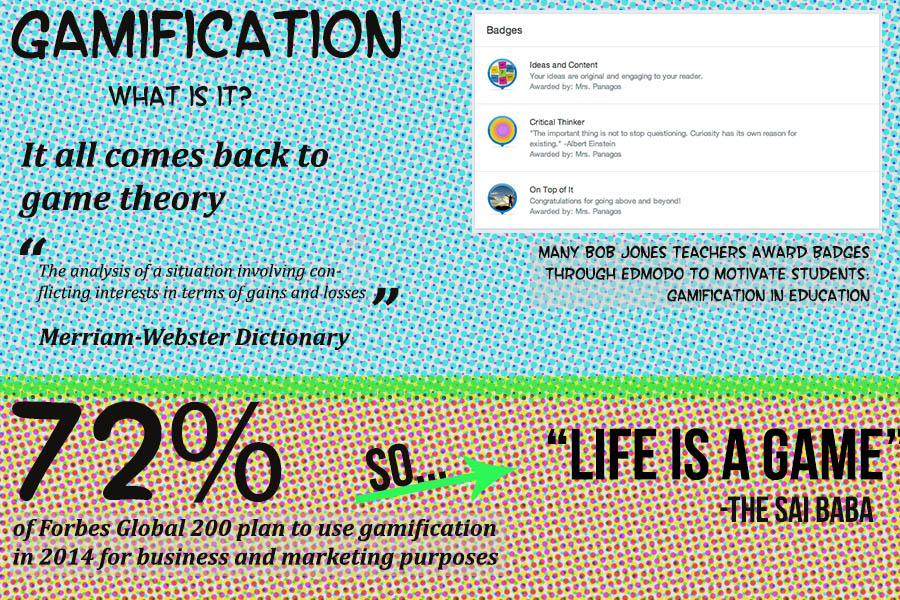“Life is a game,” the Sai Baba clichés.
As a society, the American people are surrounded by games: board games, video games, online games, or even simple games to pass time.
“I set goals for myself a lot to test my speed,” said Madison Kilpatrick, a Bob Jones Senior, when asked how she completes everyday chores.
This competitive way of dealing with life’s mundanity is a prime example of gamification-or the application of game theory in everyday life.
What is game theory? Merriam-Webster defines it as “the analysis of a situation involving conflicting interests in terms of gains and losses among opposing players.” Or, in layman’s terms turning life into a game.
While this practice helps people with chores, coping with traffic, or simply passing boredom, educators and business owners are catching on that game theory not only works but gives remarkable results.
According to the New York Times, smart phones have made games and badges common place in all areas of business and educational life.
“I’ve made over 200 different badges, and I even had student input, so after a while it became a contest as to who in the class could earn the most badges, it didn’t matter what it was, [the badge] could be anything,” said Cindy Huskey, Bob Jones Library Media Specialist and former teacher.
Mrs. Huskey observed that the badges in Edmodo worked, but that they brought out a cut throat attitude in her students.
“Even though it was not a tangible reward, it was something they could hold over peoples head…it was bragging rights,” said Mrs. Huskey.
These simple games not only create competition but something more serious: addiction.
Former professional marketer, Gabe Zichermann, told BBC News that “If we deliver undefined rewards of variable sizes at undefined intervals, people can become addicted. Could you design a gamification application that was purely about addiction and compulsion? Absolutely.”
This has led critics of gamification to believe that its implication in business is exploiting customers.
However local business owner Chris Moore disagrees. The owner of Grounded Coffee in Madison likes to look at the positive side of enticing games and reward systems to contradict the negativity by using a virtual reward system.
Using an app called Perka, Grounded Coffee customers “check in” every time they buy a drink. Each purchase increases their status from “local” to “regular” to “VIP”- the highest achievement. After twelve purchases, the customer can redeem any drink on the menu for free.
“I really think [my customers] like [Perka] a lot, we have people who ask ‘hey have you got my punches’ or ‘I checked in have you got me yet?’ People get more excited about it and it helps them get more involved in the process,” says Moore.
So why is gamification “helping people become more involved in the process”? According to technology writer, Geoff Simon, the answer lies with the “video game” generation.
“A generation of Millennials is now in the work force, and this is a generation who grew up playing interactive games,” says Simon.
While some people might claim that gamification is an exploitive marketing technique aimed to trick Millennials into making purchases, I disagree.
As a Millennial who grew up playing my various Game Boys and collecting points on Neopets, I can safely say I enjoy games.
Why shouldn’t educators and businesses actually use something that people enjoy to do their job? I would take earning a badge or stamping a virtual punch card any day to listening to mindless commercials drone on or receiving zero encouragement from completing my hours of homework each night.


